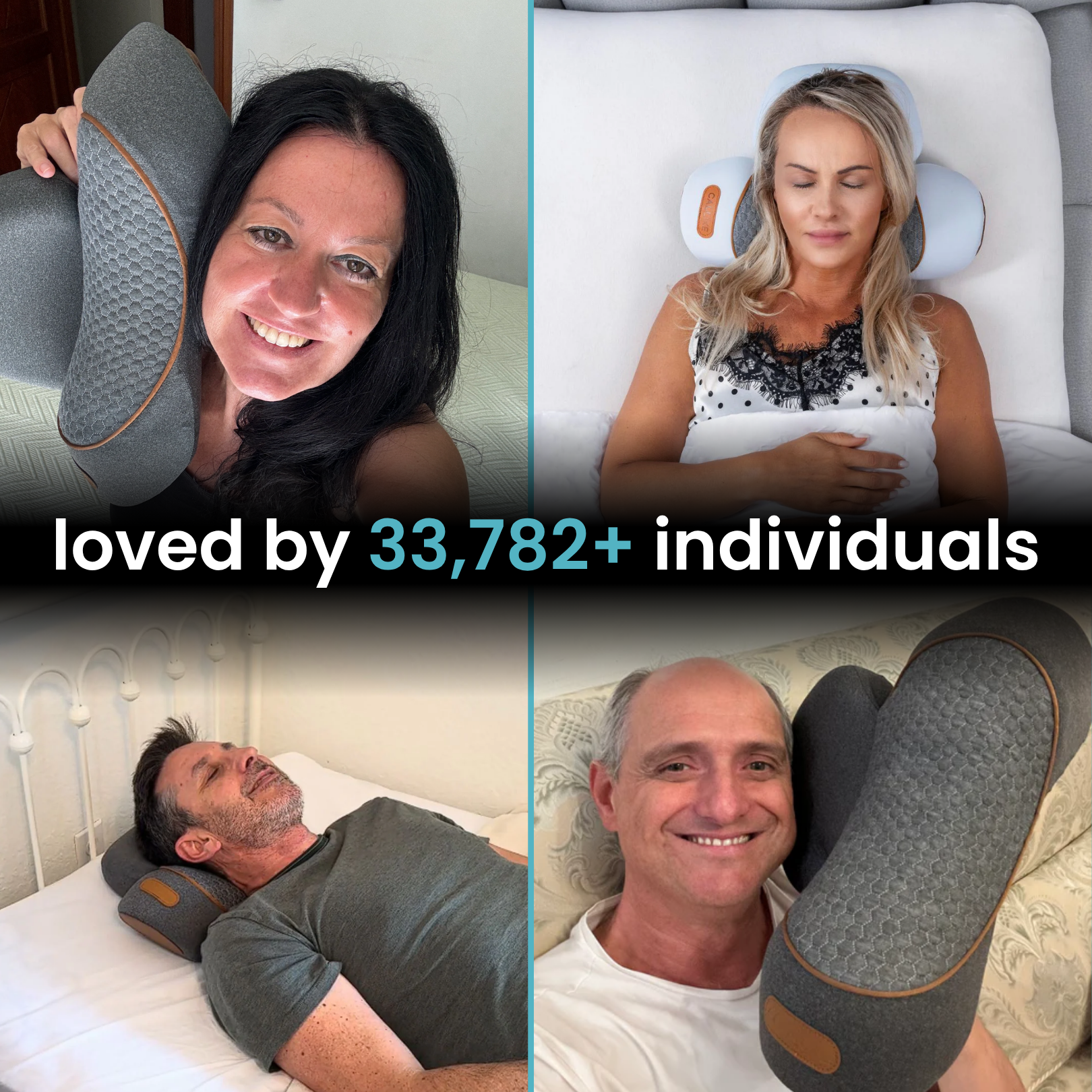
Forward Head Posture Correction YouTube: Video vs Device Therapy 2025
- Introduction
- Understanding Forward Head Posture
- The Role of YouTube in Posture Correction
- Video Therapy for FHP
- Device Therapy for FHP
- Comparing Effectiveness: Video vs Device Therapy
- Hybrid Approaches
- Considerations for Choosing the Right Method
- Future Trends in FHP Correction (2025 and Beyond)
- Expert Recommendations
- Conclusion
- Call-to-Action
Introduction
Overview of Forward Head Posture (FHP)
Forward Head Posture (FHP) is a common musculoskeletal issue characterized by the head protruding forward from the body's centerline. It can lead to discomfort, pain, and long-term health problems if left uncorrected.
Rise of digital content and therapy devices in 2025
As digital content consumption surges and innovative therapeutic devices become more accessible in 2025, individuals seek effective solutions for posture correction online. The landscape presents new ways to address FHP, blending traditional exercises with advanced technology.
Purpose of comparison: Video-based correction vs Device therapy
This article compares the two prominent methods—YouTube tutorial-based exercises and modern device therapy—helping you choose the best approach for correcting Forward Head Posture in 2025.
Understanding Forward Head Posture
Definition and anatomy
Forward Head Posture occurs when the neck muscles and cervical spine shift forward, causing the head to jut out. The anatomy involves misalignment of the cervical vertebrae and strain on surrounding muscles and ligaments.
Causes and risk factors
- Prolonged screen time and poor ergonomics
- Bad posture habits
- Stress and muscle imbalances
- Age-related degenerative changes
Symptoms and health implications
Common symptoms include neck pain, headaches, shoulder tension, and reduced mobility. Over time, FHP can contribute to chronic musculoskeletal issues and nerve compression.
The Role of YouTube in Posture Correction
Accessibility and popularity
YouTube offers free, instant access to a wide array of posture correction videos, making it a popular resource for individuals seeking immediate solutions.
Types of content: tutorials, exercises, expert advice
Content ranges from detailed tutorials demonstrating corrective exercises to expert advice on managing FHP effectively, often fostering community engagement and motivation.
Limitations of video-based approaches
However, videos lack personalized assessment, which can lead to improper technique or ineffective results if not tailored to individual needs. Quality and credibility vary across channels, requiring viewers to be discerning.
Video Therapy for FHP
Common features of posture correction videos
- Demonstrations of exercises targeting neck, shoulders, and upper back
- Educational content explaining posture mechanics
- Motivational messages and community engagement to promote consistency
Advantages
- Free and easily accessible
- Flexible scheduling to fit individual routines
- Visual and verbal cues enhance understanding
Challenges
- Unable to provide personalized assessments or adjustments
- Risk of improper execution without professional supervision
- Quality can vary, affecting effectiveness and safety
Device Therapy for FHP
Types of devices (e.g., cervical traction devices, posture correctors)
Modern device therapy includes cervical traction devices, posture correctors, and smart wearable technologies designed to realign the neck and strengthen supporting muscles.
Technological advancements in 2025
- Smart devices embedded with sensors for real-time feedback
- AI-powered systems that adapt to user-specific needs and progress
Advantages
- Enhanced precision through technological feedback
- Personalized adjustments optimize results
- Real-time monitoring increases user adherence
Challenges
- Higher cost and potential accessibility barriers
- Dependence on technology and potential technical issues
- Discomfort or misuse if devices are not properly used
Comparing Effectiveness: Video vs Device Therapy
Evidence from recent studies (2020-2025)
Recent research indicates that device therapy generally offers more precise and sustained correction, especially when combined with professional oversight. Video tutorials can be effective short-term but may lack the customization needed for long-term success.
Long-term vs short-term outcomes
Device therapy tends to produce better long-term improvements due to tailored interventions, while video-based approaches often yield quicker results but require ongoing commitment.
Patient adherence and engagement
Engagement levels vary; some users thrive with interactive devices, while others prefer the flexibility of videos. Combining both approaches can enhance adherence.
Personalized care considerations
Personalized treatment plans, often facilitated by devices with AI support or professional guidance, typically outperform generic video routines in correcting FHP effectively.
Hybrid Approaches
Combining YouTube tutorials with device use
Many individuals find success by integrating free YouTube exercises with targeted device therapy, maximizing benefits through varied stimuli.
Tele-rehabilitation and virtual coaching
Virtual consultations with healthcare professionals and remote monitoring complement online content, ensuring proper technique and progression.
Role of healthcare professional oversight
Expert supervision ensures safety, corrects improper habits, and personalizes routines, making hybrid models a practical choice in 2025.
Considerations for Choosing the Right Method
- Severity of FHP and specific health conditions
- Age, physical fitness, and mobility
- Budget constraints and device availability
- Personal motivation and lifestyle preferences
Future Trends in FHP Correction (2025 and Beyond)
Integration of AI and machine learning
Continued advancements will enable smarter, more adaptive correction systems that learn from user data for optimal results.
Wearable technology advancements
Innovations in comfort and functionality will make wearable postural devices more effective and user-friendly.
Increased telehealth collaborations
More healthcare providers will leverage virtual platforms for personalized postural therapy, improving access and outcomes.
Community-driven platforms and virtual support groups
Online communities will play a vital role in motivating users and sharing success stories, fostering accountability.
Expert Recommendations
- Always consult healthcare professionals before starting any posture correction routine
- Proper technique is crucial to prevent injury and maximize benefits
- Avoid self-diagnosis; rely on expert guidance for optimal outcomes
Conclusion
Both YouTube-based exercises and device therapy have unique strengths and limitations in correcting Forward Head Posture. While videos offer accessible, flexible solutions, device therapy provides tailored, precise correction—especially in combination with professional oversight.
Ultimately, the most effective approach depends on individual needs, motivation, and resources. Commitment and consistency remain key, and ongoing technological innovations in 2025 promise even more effective and personalized solutions.

